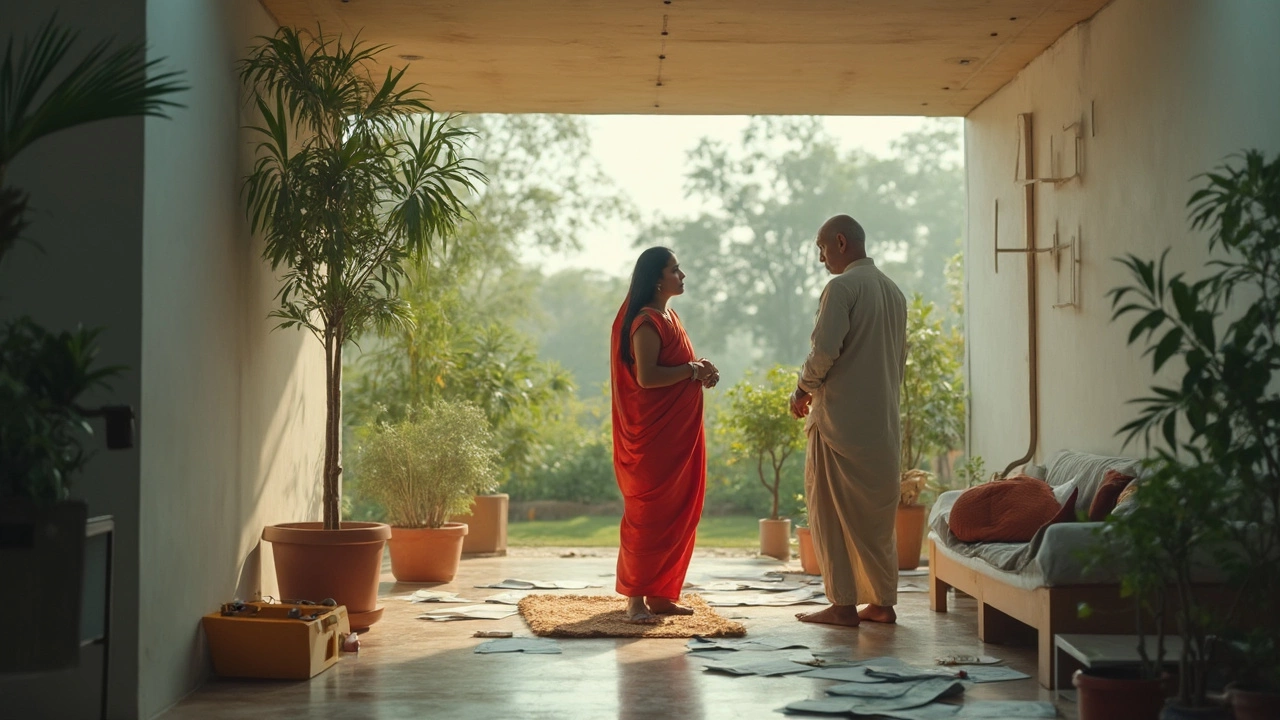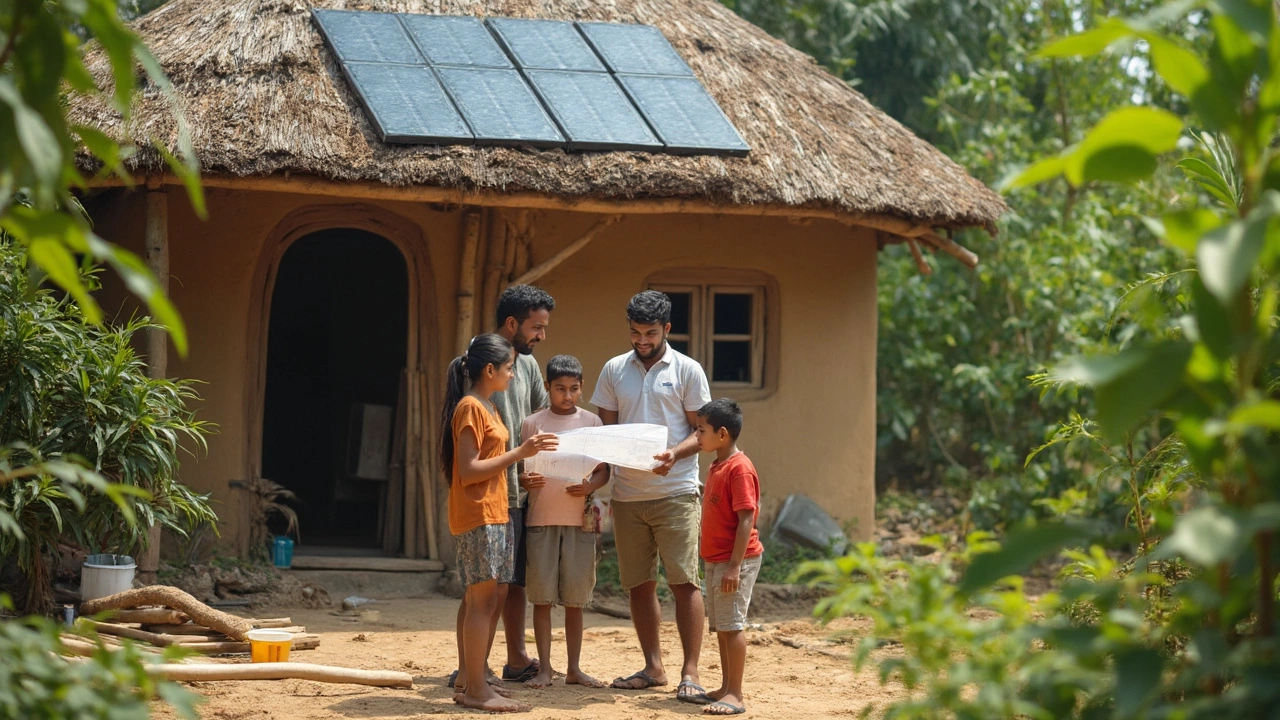Thinking about building an eco home? Get ready for a couple of curveballs. The idea of living green is great, but some things about eco-friendly cottages might catch you off guard. People talk a lot about energy savings and comfort, but the disadvantages often hide in the fine print.
One thing that jumps out right away: cost. Building or even retrofitting a cottage with solar panels, non-toxic materials, or rainwater systems isn’t cheap. Those price tags can make your eyes water—even before you start counting the extras like specialty windows or high-insulation walls. You’ll need to do the math and look past the dreamy brochures.
There’s another catch: some eco homes are a bit more complicated to run. Imagine managing three different heating systems just to stay off the grid. If you like simple, set-and-forget living, you might miss your old house. The reality isn’t always as seamless as those Instagram-ready cottages make it look.
- More Money Upfront Than You Think
- Hidden Hassles in Daily Living
- Repairs and Maintenance You Didn’t Expect
- Finding Honest Advice and Real Solutions
More Money Upfront Than You Think
When folks first look into an eco home disadvantage, the price tag jumps out fast. Building a regular home already burns through your savings, but eco-friendly cottages can cost up to 20% more at the start. Why? Materials like triple-glazed windows, recycled insulation, and FSC-certified timber aren’t cheap. Even things you don’t see—like underground heat pumps—cost a small fortune to install.
Some people figure they’ll save so much on bills, it won’t matter. In reality, breaking even takes a long time. For example, high-efficiency solar panels can run you $15,000 or more just for a small cottage, and the rebates only cover a slice of that. Water-saving toilets, rainwater harvesting, or composting systems pile on more expense—even before you move in furniture.
Let’s break down where the money goes in a typical eco-friendly cottage:
- High-efficiency windows and insulation (20-30% pricier than standard)
- Solar panels or geothermal heating (thousands extra out of pocket)
- Special ventilation or air purification systems to keep energy costs down
- Low-VOC or recycled building materials (manufacturers usually charge a premium)
- Upgrades for smart-home controls and monitoring gadgets
Here’s a quick snapshot comparing rough upfront costs (per 1,000 sq ft):
| Feature | Standard Home | Eco-Friendly Cottage |
|---|---|---|
| Insulation | $1,200 | $2,400 |
| Windows | $4,000 | $6,000 |
| Solar Panels | $0 | $15,000 |
| Geothermal Heating | $0 | $25,000 |
If you’re tight on cash, these numbers can be a deal-breaker. Some eco home builders offer financing, but that just means you’re paying interest on a higher total. Building green makes sense long-term, but there’s no denying—the first step will dent your savings more than a regular home ever would.
Hidden Hassles in Daily Living
Living in an eco home often looks easy from the outside, but once you move in, the quirks start to show. Daily routines can change way more than you expect. For starters, temperature control isn’t always automatic. These cottages usually rely on passive heating and cooling—think thick insulation, careful window placement, maybe a fancy wood stove. The catch is, you might need to adjust blinds, move around thermal curtains, or open and shut vents throughout the day to keep things comfy.
Ever tried washing clothes with rainwater or using a composting toilet? Some eco-friendly cottages pull out all the stops on water-saving tech, but these systems can act up. Filters clog, tanks need regular cleaning, and there’s a learning curve with low-flow everything. Don’t forget, if your water heater’s solar, cloudy days mean shorter showers.
Plugging in your phone or running a blender isn’t always a given. Eco home disadvantage number one: off-grid power systems have limits. Battery banks and solar setups often can’t handle lots of high-wattage appliances at once, so you might need to plan your laundry, cooking, and computer charging like a puzzle.
- Power down for the night? Some systems make you shut things off to preserve battery life.
- Some refrigerators in green cottages are smaller and less powerful to stay energy efficient, so bulk storage isn’t really an option.
- Multi-step recycling and composting routines become part of your day, not just something you do once a week.
A 2024 survey of off-grid homeowners in northern U.S. states showed that 60% wished they’d learned more about adjusting their lifestyles before moving in. Stuff like timed showers, batch cooking, and regular filter checks catch a lot of newcomers off guard. So, before you jump into life in a sustainable home, try mimicking an eco-home routine for a week. You’ll find out pretty quickly which changes actually work for you.

Repairs and Maintenance You Didn’t Expect
If you think a eco home disadvantage is just about the upfront cost, you’re missing a bigger piece: the repairs and maintenance. A lot of these eco-friendly cottages are packed with high-tech systems and eco gadgets. That means you’re not always dealing with standard home fixes. Sometimes, calling just any handyman won’t cut it. You’ll need specific knowledge or certified pros for stuff like heat pumps, greywater systems, or triple-glazed windows.
Let’s talk solar panels. They seem maintenance-free, but you still need to clean them every few months, especially if you live somewhere dusty or with lots of bird life. If one of the inverters breaks, the bill can hit four figures. Those fancy high-efficiency windows? If you get a crack, replacing them can take weeks, and your local hardware store probably can’t help. Most traditional insulation just sits there, but specialty eco-insulations like sheep’s wool or hemp can attract pests if not installed just right.
The catch is that eco materials and green systems can be rare in some regions. That means waiting for parts, ordering from out of town, or paying a premium just to keep things in working order. Here’s an easy breakdown of what surprises people the most:
- Solar panel cleaning and inverter repairs are required every couple of years.
- Heat pumps and radiant heating sometimes need specialist servicing.
- Eco-friendly paint and finishes often get scuffed up faster and need refreshing sooner.
- Green roofs look amazing but can leak or need replanting if you’re not on top of maintenance.
If you like doing home projects yourself, buckle up. You’ll have to read up on new skills or hunt down the right pro. And if you have a warranty? Double check what’s actually covered—some eco systems fall into a grey area that lets manufacturers off the hook.
| Feature | Average Service Cost (USD) | Frequency Needed |
|---|---|---|
| Solar Panel System | $250–$600 | Every 2–3 years |
| Heat Pump | $300–$700 | Every 3–5 years |
| Green Roof | $500–$1200 | Every 3 years (major work) |
Makes sense to plan and budget for maintenance. The bottom line with eco home disadvantage isn’t that things always break more—they just break differently, and the fixes can be trickier than you’d expect.
Finding Honest Advice and Real Solutions
The trickiest part about eco home disadvantage is spotting the truth under the hype. Plenty of companies will promise a magic fix for every problem, but real life isn’t that neat. A lot of people fall for buzzwords like “off-grid ready” or “zero-maintenance” and end up with headaches later.
Most folks don’t realize that local weather, building codes, and the type of land you build on can totally change which solutions work (or don’t). For example, solar panels sound awesome, but if your cottage sits in a cloudy forest area, you might be stuck with low output half the year. That matters if you want a steady fridge or Wi-Fi in winter. And green walls or sustainable insulation might save energy, but not every contractor in your area will get installation right on the first try.
When you’re serious about eco-friendly cottages, look for advice from people who’ve already built and lived in them—not just online forums, but local owners or pros who actually walk the talk. Try these steps:
- Visit local eco homes if there are open days—nothing beats seeing systems in action.
- Ask owners about real costs, not just the sales pitch. See what broke, what surprised them, and whether it’s actually cheaper over five or ten years.
- Read independent reviews (not just those on company sites), and check what your local utility says about renewable setups for your area.
- Before committing, ask an independent energy consultant for a site assessment. It’s not free, but they’ll give you straight talk before you install a pricey feature that might not work as planned.
Having trouble comparing products or features? Take a look at what some typical costs and maintenance requirements might be:
| Feature | Average Upfront Cost ($) | Typical Annual Upkeep ($) |
|---|---|---|
| Solar Panels | 10,000-20,000 | 200-400 |
| Green Roof | 15,000-25,000 | 500-1,200 |
| High-Efficiency Windows | 7,000-12,000 | Minimal |
The point is, there’s no single recipe. Being aware of every eco home disadvantage before jumping in will help you make smarter choices—and avoid rookie mistakes. Going green is great, but not asking enough questions can cost you more than just cash.
